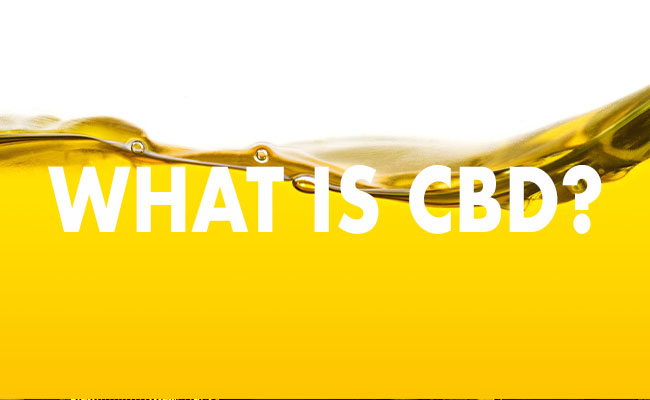
Vitamin E in Skincare
WRITTEN BY SHALINI RANA AND DR. SWATHI
A good skincare routine is important to keep our skin looking young and healthy as we age. This routine may include topical products that replenish the skin’s nutrients or products that leave our skin looking glowy and feeling refreshed. As new creams and serums saturate the market containing all types of ingredients, it’s important to understand which ingredients are actually beneficial, and which don’t really do much. One ingredient that has important functions and may make a good addition to your routine is Vitamin E. But what makes it so useful? Let's do a deep dive into its properties and benefits.
What is Vitamin E?
Vitamin E is an essential nutrient in our skin. Its benefits include helping to smoothen our skin, playing a role in hydration, and functioning as an antioxidant [4]. Antioxidants are really good for us because they help to absorb harmful UV rays and prevent the buildup of DNA-damaging substances in the body. Vitamin E works to reduce a substance in our skin cells called reactive oxygen species (ROS), which are toxic byproducts that form when oxygen is broken down [6, 3]. A high ROS concentration can lead to membrane damage, so by working to reduce the amount of ROS in our body, Vitamin E can keep our skin barrier strong. Thus, Vitamin E may play a role in preventing skin disorders caused by UV-radiation and ROS toxicity [1].
Vitamin E can also help prevent photoaging, a process in which oxidative stress on skin cells causes them to age sooner than normal. Not only does photoaging cause our skin to become more rigid, thicker, and less vibrant, it also can damage our stem cells, preventing healthy skin cells from growing back in place of the damaged ones [3]. So, Vitamin E may play a role in healing our skin.
An additional benefit of Vitamin E is its anti-inflammatory effects. Studies show that Vitamin E has the ability to inhibit COX-2, an enzyme that promotes the synthesis of pro-inflammatory substances in the body. UV light is a potent activator of the COX-2 enzyme. Therefore, by helping to absorb UV light, Vitamin E helps prevent overactivity of this enzyme and can help reduce inflammation [7].
Are there different types of Vitamin E found in skincare products?
Vitamin E has many different forms which are each distributed differently in living things. These forms include four tocopherols (⍺, 𝛽, 𝛾, 𝛿) and four tocotrienols (⍺, 𝛽, 𝛾, 𝛿), which are both fancy names for the different isomers of the molecule [7]. Natural Vitamin E, otherwise known as D-a-tocopherol or a-tocopherol, is the most abundant form in the human body, as well as the form with the greatest biological activity. We want natural Vitamin E in our skincare products because this is the form that offers the antioxidant, hydrating, anti-aging, and anti-inflammatory effects mentioned above. However, some skincare formulations may use a synthetic form of Vitamin E called DL-tocopherol, which is a mixture of all the different isomers of Vitamin E and does almost nothing for our skin [8]. Therefore, it is important to read your product’s ingredient list and watch out for DL-tocopherol, because the Vitamin E in that product will likely have no benefit. A good rule of thumb is, if there is an ‘L’ before ‘tocopherol,’ then that product contains synthetic Vitamin E, not natural vitamin E.
Vitamin E is becoming increasingly found in many skincare products. It is available mostly in oils and creams and can also be formulated as serums and capsules. Oils, creams, and serums tend to contain more diluted concentrations of the vitamin while capsules contain a pure, highly concentrated form of the vitamin. Concentrations between 0.1-1.0% are considered both safe and effective, so when searching for products, try to find one that lists a Vitamin E concentration of at least 0.1% [7].
Vitamin E can also be found in combination with Vitamin C in sunscreen and can provide powerful protection against the sun’s UV rays. However, it is important to note that Vitamin E oil is not a replacement for sunscreen. This is because there are two different types of UV light: UV-A and UV-B. Vitamin E has a role in helping to absorb UV-B, but has no effect on preventing UV-A penetration [6]. Therefore, a good choice would be picking a Vitamin E product that also contains Vitamin C, so you get a strong photoprotective effect.
It is important to note that Vitamin E is not found in beauty or skincare products as only isolated compounds. Incorporating botanical or herb extracts is a great way to incorporate the benefits of this healing vitamin from a natural source. A few examples include seabuckthorn oil, moringa oil, and abyssinian oil–all three found in the Element Apothec Belle Visage Face Serum.
Which skin types are best for Vitamin E? Are there side effects?
Vitamin E works best on dry and normal skin types. Most formulations containing Vitamin E are diluted to contain lower concentrations that don’t cause side effects. However, the highly concentrated capsule form has shown to cause more side effects than its counterparts. For people with oily skin, or skin prone to acne, Vitamin E can potentially clog the pores and have an opposite effect on hydration. Also, more sensitive skin types or areas on the face, like under the eyes, may be prone to developing conditions that present as red patches and itchiness. Although this reaction is uncommon in frequent vitamin-E users, it’s always safe to do a patch test on the skin when testing out a product for the first time, especially since ingredients can have variable purities [6]. To try and prevent any skin reactions from occurring with the capsule form, consider using it in one area, like a scar or dark spots, rather than all over the face [5].
What is the best way to store products with Vitamin E?
In short: Store them in a cool, dry place.
Vitamin E, as we have learned, is great for our skin. However, once exposed to air and oxygen, the molecule can destabilize and lose its effects after undergoing oxidation. In addition, some forms are prone to developing oxidation byproducts in the body that increase the risk of developing reactions to the product, like dermatitis [7]. So, be sure to store your products in cool, dry areas and close the containers quickly after opening to prevent oxidation.
The bottom line
Vitamin E is an important part of our skin’s barrier function. Not only does it protect against UV rays and other damaging substances, but it may also promote anti-inflammatory effects and can keep our skin looking youthful. If you have a dry or normal skin type, consider adding a Vitamin E product to your skincare routine. You may find that it helps strengthen and heal old acne scars, or that it makes a nice addition to the Vitamin C in your usual sunscreen. But remember that Vitamin E does have its drawbacks, like potentially causing sensitivity reactions. So, before choosing just any product with Vitamin E, make sure you look for an ingredient list containing natural Vitamin E, do a patch test, apply your product to the right areas, and store your product in the right place.
References
- Thiele JJ, Ekanayake-Mudiyanselage S. Vitamin E in human skin: organ-specific physiology and considerations for its use in dermatology. Elsevier Sci. 2007;28(5-6):646-667.
- Ayala A, Munoz MF, Arguelles S. Lipid Peroxidation: Production, Metabolism, and Signaling Mechanisms of Malondialdehyde and 4-Hydroxy-2-Nonrenal. Oxid Med Cell Longev. 2014;2014* finish
- Petruk G, Del Giudice R, Rigano MM, et al. Antioxidants from Plants Protect against Skin Photoaging. Oxid Med Cell Longev. 2018;2018:1454936. Published 2018 Aug 2. doi:10.1155/2018/1454936
- Gould H. Vitamin e Is the Intensely Moisturizing, Formula-Stabilizing Ingredient Derms Love. Byrdie. Updated August 23, 2022. Accessed October 29, 2022. https://www.byrdie.com
- Kosari P, Alikhan A, Sockolov, M, et al. Vitamin E and Allergic Contact Dermatitis. Dermatitis. 2010;21(3);148-153.
- Vitamin E for Skin: What Does It Do? health.clevelandclinic.org. February 24, 2022.
- Michels AJ. Vitamin E and Skin Health. lpi.oregonstate.edu. February 2012. Accessed November 2022. https://lpi.oregonstate.edu/mic/health-disease/skin-health/vitamin-E#:~:text=Howe ver%2C%20concentrations%20of%20vitamin%20E,apparent%20side%20effects%20(16)
- Why we use Natural Vitamin E so much. moogoousa.com. Accessed November 2022. https://moogoousa.com/blog/why-we-use-natural-vitamin-e-so-much#:~:text=Vitamin%20E%20will%20always%20appear,synthetic%20version%20of%20Vitamin%20E.
–
This article was edited by Dr. Swathi and was written by Element Apothec Scientific Communications Intern, Shalini Rana. She is a Doctor of Pharmacy (PharmD) candidate at Rutgers University Ernest Mario School of Pharmacy in Piscataway, New Jersey.











